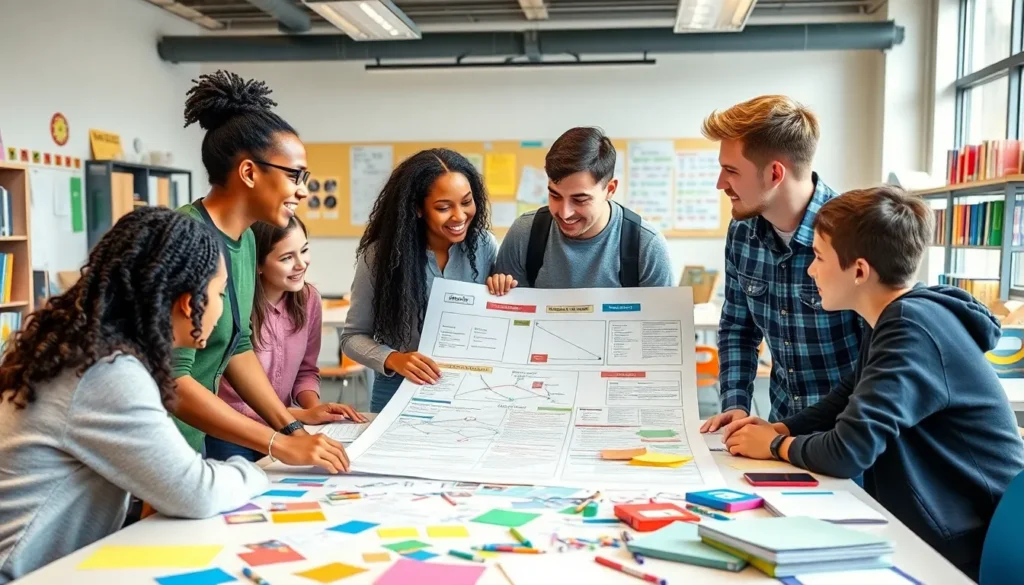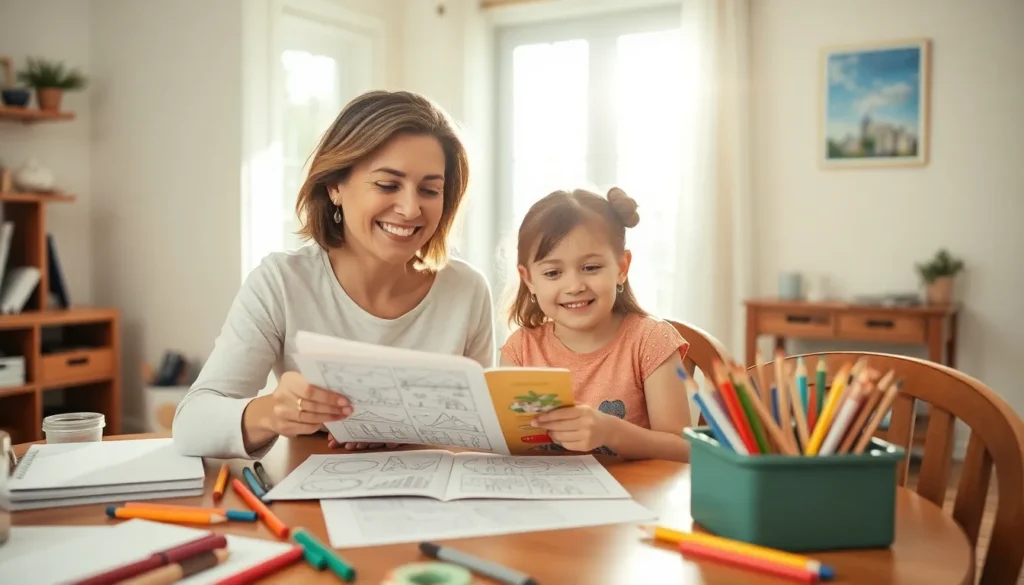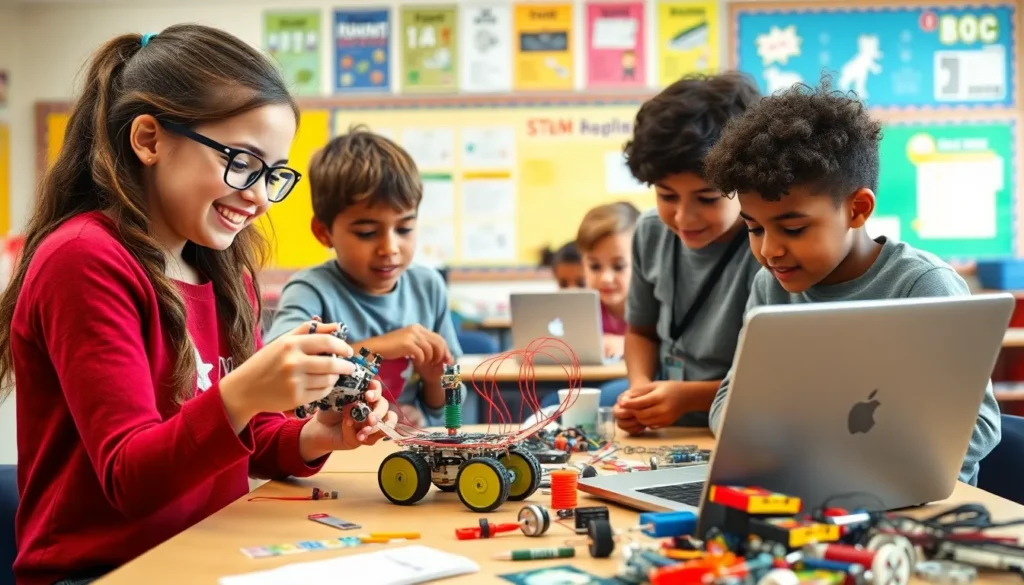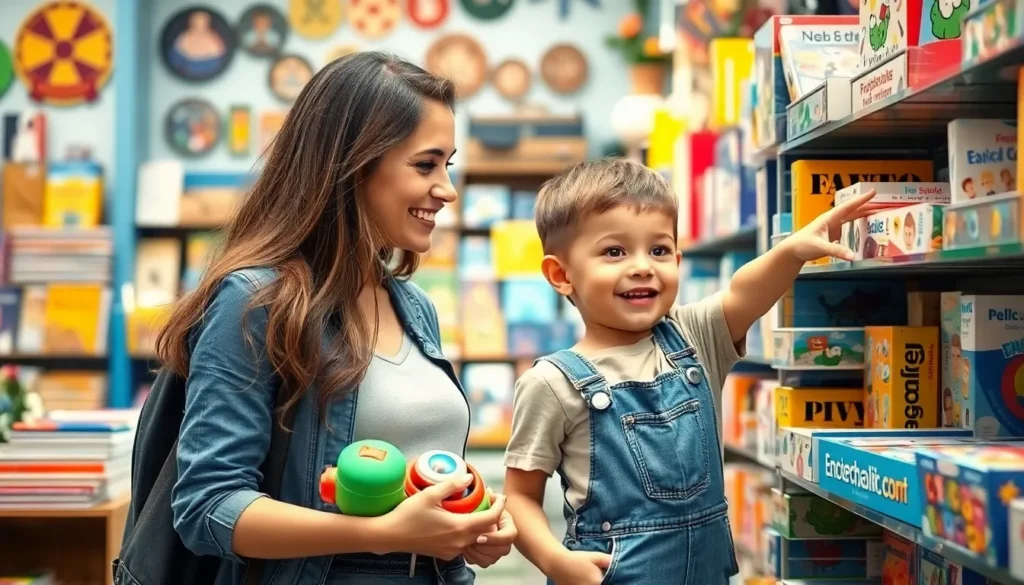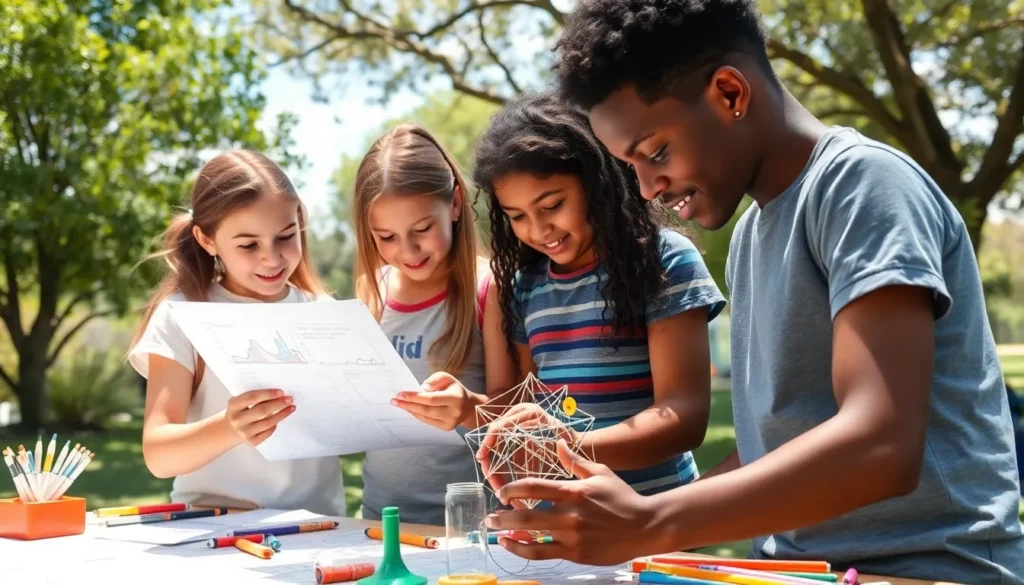Table of Contents
ToggleIn a world where students often find themselves trapped in the cycle of passive learning, active learning bursts onto the scene like a superhero in a classroom cape. It’s not just about sitting and soaking in information like a sponge; it’s about engaging, participating, and—dare we say—having a little fun while doing it. Imagine a classroom where students don’t just memorize facts but debate, collaborate, and even dance their way through lessons. Sounds like a dream, right?
Overview of Active Learning
Active learning represents a strategic approach that fosters greater engagement among students. This method encourages participation in various activities rather than focusing solely on passive listening. Students can enhance their understanding through discussions, problem-solving, and hands-on projects. Research indicates that active learning can significantly improve retention rates, leading to better academic performance.
In active learning environments, students often work in groups. Group collaboration allows individuals to exchange ideas and perspectives, broadening their understanding of the subject matter. This type of interaction also cultivates critical thinking skills, as learners analyze and evaluate different viewpoints.
Teachers play a vital role in facilitating active learning. They guide discussions, pose challenging questions, and create learning experiences that spark curiosity. Effective instructors design activities that require students to apply knowledge in real-world scenarios. Such engagement deepens comprehension and makes learning relevant.
Active learning is applicable across subjects. Mathematics classes can incorporate problem-solving tasks, while science courses might include experiments and simulations. In humanities, students can engage in debates and role-playing, enriching their grasp of complex themes. Diverse activities cater to various learning styles, ensuring inclusivity in the classroom.
Implementing active learning strategies involves careful planning and flexibility. While instructors develop structured activities, they adapt based on student responses. Continuous feedback helps refine the learning process, promoting an environment where students feel empowered to explore and inquire.
Active learning transforms traditional education, promoting deeper engagement and collaboration. It equips students with essential skills for academic success and lifelong learning.
Benefits of Active Learning

Active learning offers numerous advantages that enhance the educational experience. By involving students directly in the learning process, it creates a more dynamic environment conducive to deeper understanding.
Enhanced Engagement
Engagement levels soar in active learning settings. Students participate in discussions and collaborative projects, making classes lively and interactive. Group activities foster communication, allowing learners to share knowledge and insights. Higher participation rates lead to stronger connections among peers. This enhanced interaction keeps students motivated and interested in their studies. Teachers facilitate this engagement by introducing innovative tasks that pique student curiosity, driving a more enriching experience overall.
Improved Retention
Active learning techniques significantly boost information retention. When students engage with material through hands-on activities and problem-solving, they better encode information in their memories. Research indicates that active involvement leads to higher retention rates compared to traditional methods. Understanding concepts deeply comes from applying knowledge in real-world contexts, reinforcing learning. Using varied instructional strategies helps accommodate diverse learning styles, further enhancing retention by catering to individual preferences.
Active Learning Strategies
Active learning strategies enhance classroom engagement by incorporating dynamic learning techniques. Various methods foster collaboration, critical thinking, and hands-on experiences among students.
Collaborative Learning
Collaborative learning engages students in group activities that promote teamwork and idea sharing. Students develop interpersonal skills while discussing topics and solving problems together. This peer-to-peer interaction enhances understanding and retention of material. Research indicates that collaborative projects lead to improved academic performance. Diverse perspectives contribute to deeper insights, enriching the learning experience for all participants.
Problem-Based Learning
Problem-based learning centers around real-world challenges that students tackle collaboratively. Students work in groups to analyze complex issues and propose solutions. This approach encourages critical thinking, as participants must apply their knowledge creatively. Feedback from peers and instructors enhances the learning process. Studies reveal that problem-based learning significantly improves analytical skills and fosters a deeper understanding of subject matter.
Experiential Learning
Experiential learning emphasizes learning through direct experience. Students engage in hands-on activities, such as internships or fieldwork, to apply theoretical concepts. Real-world applications create meaningful connections, enhancing information retention and skill development. Instructors guide students as they reflect on their experiences, promoting a deeper understanding of course content. Evidence shows that experiential learning leads to increased motivation and better preparation for future challenges.
Challenges of Implementing Active Learning
Implementing active learning presents several challenges that educators must navigate effectively.
Resistance from Educators
Resistance from educators often hampers the adoption of active learning methods. Many instructors prefer traditional teaching styles, which can create reluctance to change. Some teachers may feel unprepared or lack training in active learning techniques. Skepticism about effectiveness persists, especially with educators who believe in lecture-based models. Additionally, concerns about classroom management during interactive activities contribute to hesitance. Peer support and professional development opportunities can address these issues, fostering a culture that embraces innovative teaching practices.
Resource Limitations
Resource limitations in schools pose significant barriers to active learning. Lack of access to technology, supplies, or suitable classroom space restricts implementation. Many classrooms face overcrowding, making group activities challenging. Budget constraints may limit opportunities for training and development in active learning strategies. Furthermore, teachers often require time to design engaging activities that align with curriculum goals. Addressing these resource challenges can improve the feasibility of implementing active learning approaches effectively.
Active learning represents a significant shift in educational practices by prioritizing student engagement and collaboration. It empowers learners to take charge of their education through hands-on experiences and critical thinking. By fostering an interactive classroom environment, educators can cultivate deeper understanding and retention of knowledge.
While challenges exist in adopting these methods, the benefits far outweigh the obstacles. With the right support and resources, teachers can effectively implement active learning strategies that not only enhance academic performance but also prepare students for real-world challenges. Embracing active learning paves the way for a more dynamic and impactful educational experience.

